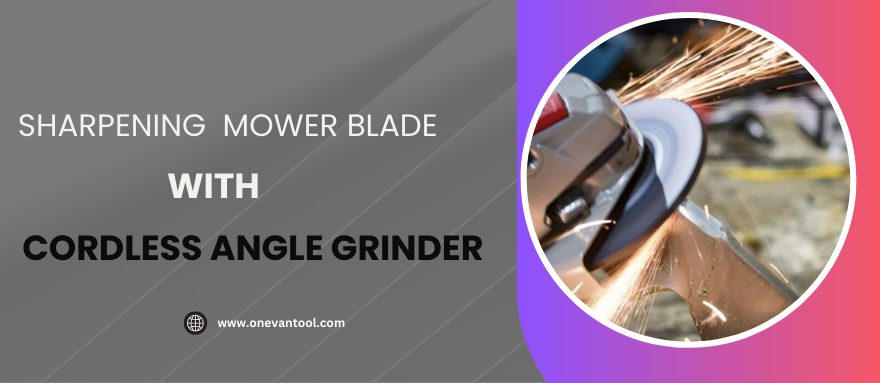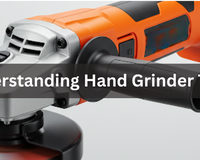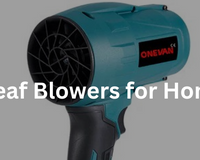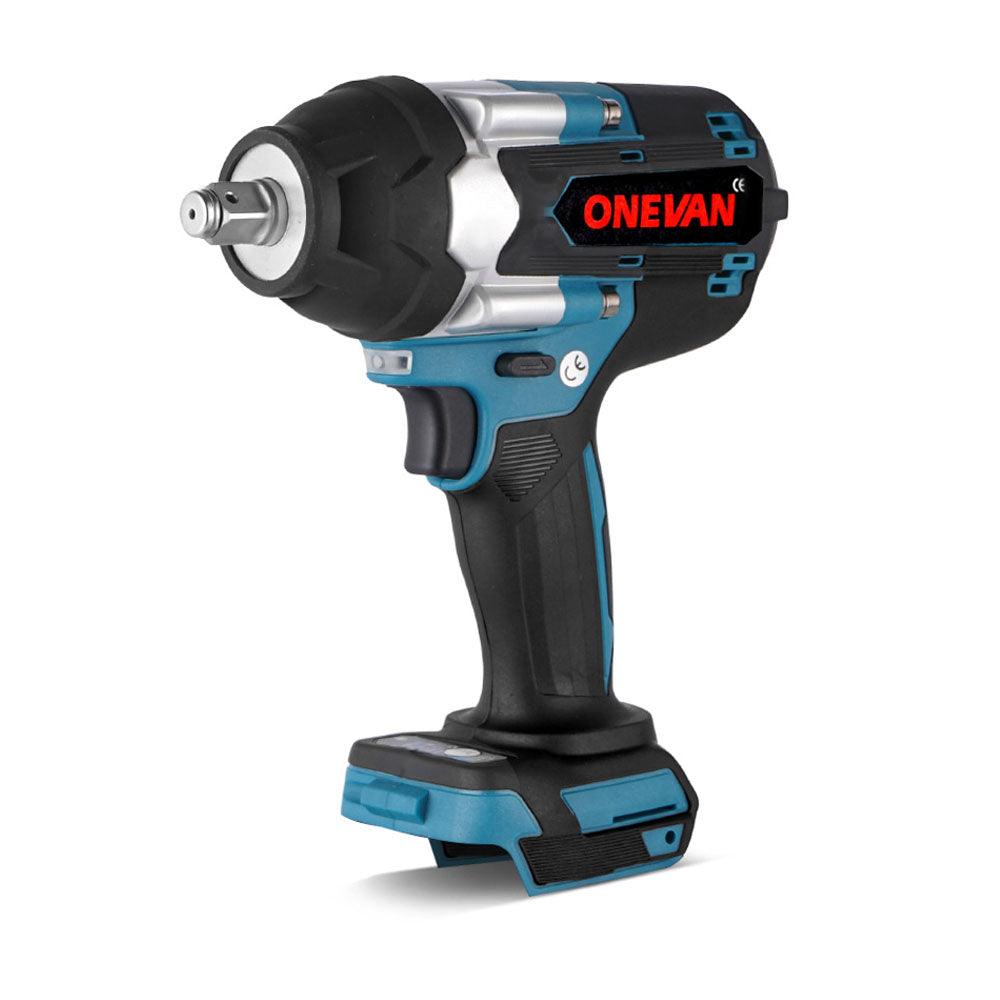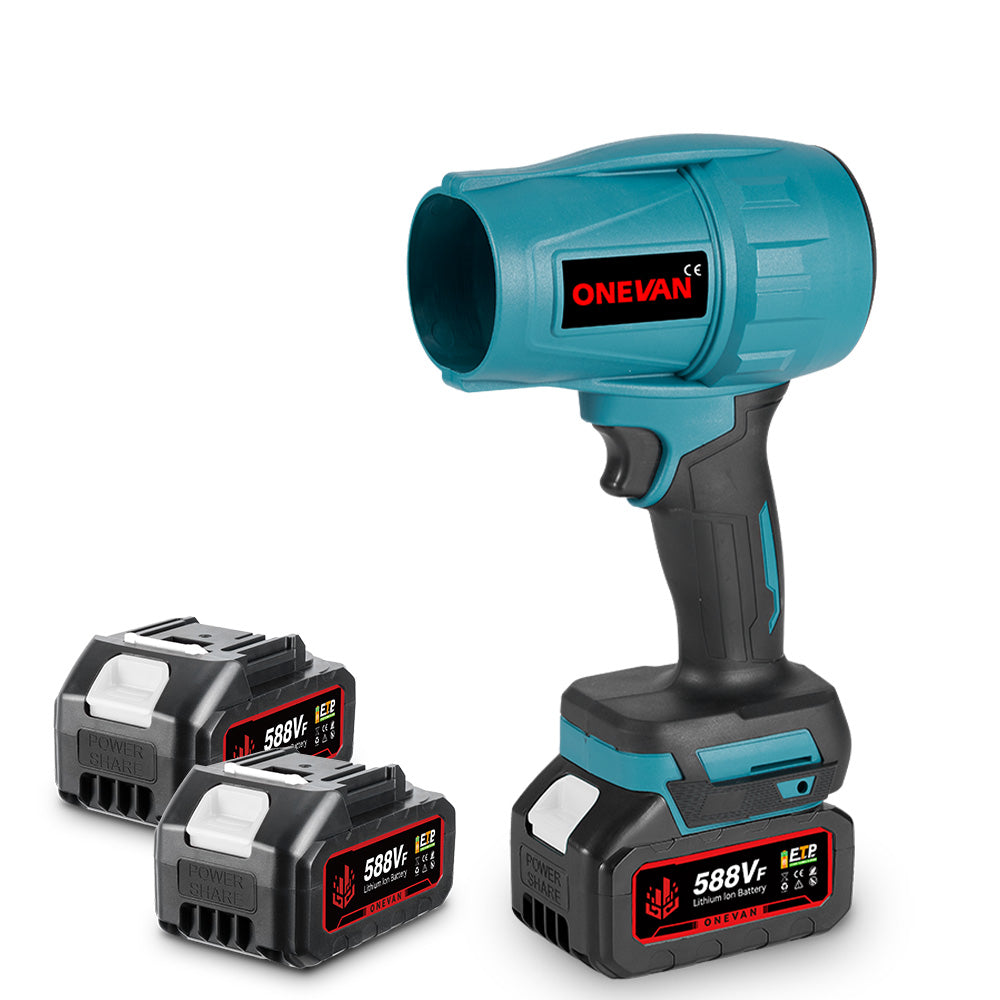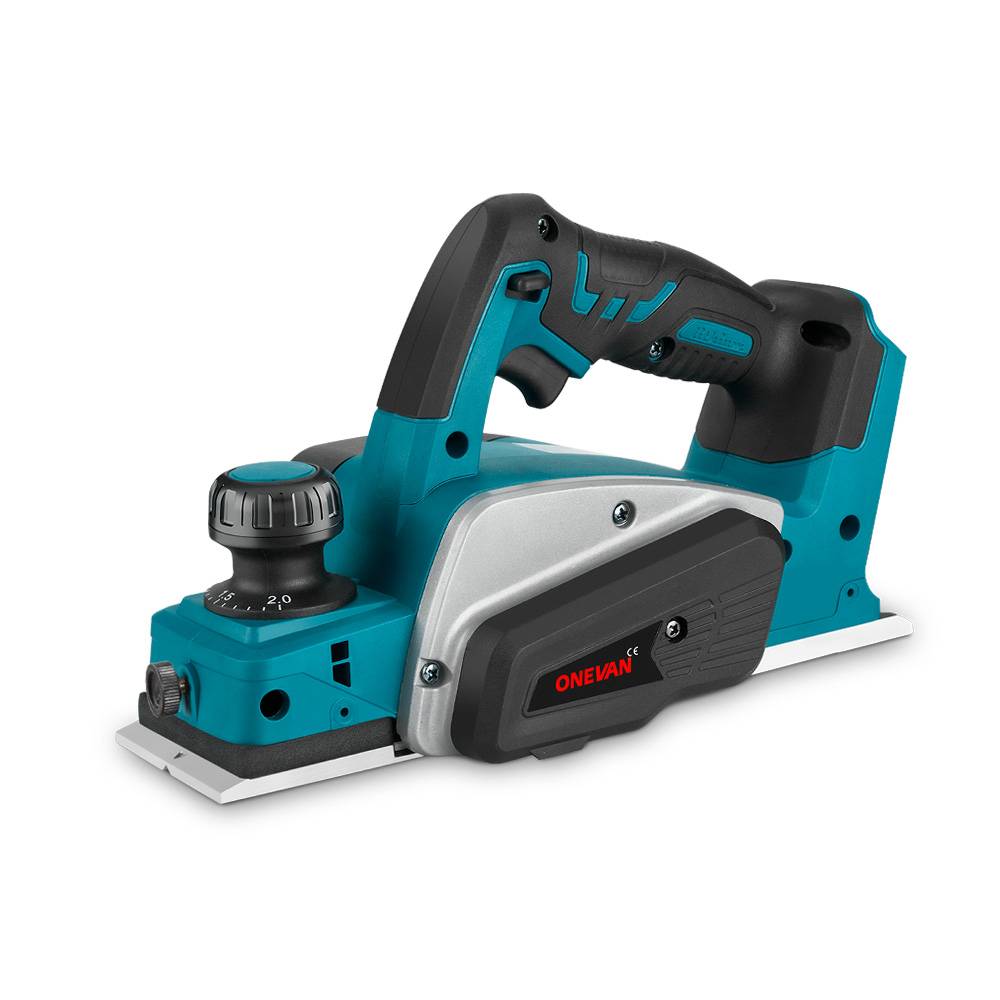A beautifully maintained lawn is a testament to your attention to detail and meticulous care. A sharp mower blade is essential for clean cuts and healthy grass growth.
This guide provides practical steps to sharpen your mower blades using a cordless angle grinder. Follow these instructions to maintain your mower and lawn in optimal condition. Let's begin.
1. Preparing Materials & Tools Before Sharpening Mower Blades with a Cordless Angle Grinder
Here is a list of materials and tools required to sharpen mower blades with a cordless angle grinder.
Cordless angle grinder:
The mower blades usually become dull from constant use. Therefore, they need regular sharpening. To sharpen the mower blades, you need a cordless angle grinder.
Appropriate grinding stone or disc:
Select a grinding wheel which is specifically designed for metal. The appropriate grit directly depends on the blade's condition. However, a medium-grit wheel is more than sufficient.
Safety goggles and gloves:
It is important to wear safety goggles and gloves especially when you are working with a power tool like a cordless angle grinder. During sharpening, the flying debris can damage your eyes.
Wrench or socket:
A wrench or socket will help you remove the mower blades from the lawn mower before you start sharpening.
Cleaning cloth and lubricant:
After sharpening the mower blades with a grinder, clean them thoroughly using a cleaning cloth and then lubricate them.
2. Safety Measures for Sharpen Mower Blades with a Cordless Angle Grinder

Essential Safety Gear
Eye protection – Put on safety glasses to protect your eyes from metal chips flying off.
Face protection- A face shield will protect your whole face.
Hearing protection - Earplugs are essential to protect your hearing from loud noise.
Gloves – Heavy-duty work gloves can save your hands from cuts and sparks.
Long sleeves and pants - Cover your arms and legs with long sleeves and long pants. This dress will protect your skin.
Prepare Your Workspace
Outdoor area: You should work in a well-ventilated place away from flammable materials; sharpen the blade outside.
Stable work surface—Use a strong workbench or table to secure the blade adequately.
Fire extinguisher: You should keep a fire extinguisher to counter any accident.
Secure the Blade
Cordless Electric Lawn Mower: Remove the battery pack before removing the blade.
Corded Electric Lawn Mower: Unplug the mower from the power source before removing the blade
Gasoline-Powered Lawn Mower: Disconnect the spark plug wire before removing the blade.
Clamp down on the blade- Securely using vise grips or other clamps while sharpening.
3. Removing the Lawn Mower Blades
The following simple steps outline the process of removing lawn mower blades. To maintain optimum safety, attach the mower blade from the mower before sharpening with the cordless angle grinder.
Shut Down Your Mower
The most important thing is to ensure that your machine is completely off. For gas-powered ones, you will need to switch off the engine and pull the spark plug wire to prevent unintended starting. With electric mowers, unplug them or remove the battery pack.
Remove Blades
If you face any trouble, use some penetrating oil. For loose bolts, carefully lift off the blade. Watch out how it sits; you will put it back on this way again.
Clean Up
To begin with, sharpening, it would be wise if you cleaned up both blades and the mower deck properly. Scrape off any caked-on grass or dirt with a wire brush. Cleaning the blade improves mower efficiency and extends its life.
4. Sharpening the Blades with a Cordless Angle Grinder
This part provides a step-by-step guide on how to use an angle grinder to sharpen lawnmower blades.
Step 1: Gather Your Tools and Equipment- Cordless angle grinder
- Correct grinding stone or disc
- Protective goggles and gloves
- Wrench or socket for blade removal
- Clamps or a vise to secure the blade
- Cleaning cloth and lubricant
- Remove mower blades using a wrench or socket that fits well.
- Detach grass clippings and dirt from the blade completely.
- Ensure you hold the blade in place by screwing it tightly but securely on the clamp /vice during sharpening.
Selecting the appropriate grinding stone is crucial for optimal results. For example, normal grinding wheels are ideally suited for most steel mowing machine blades. However, if you happen to own a hardened steel blade, then you might require a specialized grinding wheel.
Step 4: Safety First- Never underestimate safety gloves and goggles.
- Ensure proper ventilation in your workspace to reduce exposure to dust and metal particles.
- Inspect the angle grinder's cord, battery, and attachments for any signs of damage before use.
- Before using the angle grinder, check whether the cord, battery, and accessories are damaged.
- Follow the manufacturer’s instructions for mounting the grinding wheel or disk on the angle grinder.
- Select a moderate speed range for your machine; high speed can cause excessive heat. It can also burn your blade.
- As you grind, maintain a steady 25-30 degree angle between the blade and disc to improve sharpening results; you can use an angle finder or protractor to maintain accuracy.
- Open contact with the edge of the blade slowly using a grinding stone or disc.
- Move the grinder along the edges of the blade evenly while applying little pressure on it.
- Keep a consistent pace and angle throughout this operation.
- Test the blade's sharpness at regular intervals to avoid over-sharpening.
- Clean it thoroughly after sharpening and check it out for any faults in shape or structure that might have been introduced during this task by mistake.
- To balance blades and ensure smooth running without vibration, one can use a balance tool or ask an expert if necessary.
- Once you've sharpened the blade, clean it thoroughly and inspect it for any irregularities or damage.
- Balance the blade to ensure smooth operation and prevent vibrations. Use a blade balancing tool if needed or consult a professional.
- Lubricate the blade's spindle before reinstallation.
- Securely tighten the blade onto the mower, following the manufacturer's instructions.
- Mow a small area of your lawn to assess the blade's performance.
- Check for even cuts, clean grass clippings, and the performance of the mower.
- Make relevant adjustments to the blade. It is based on the test results.

To sharpen mower blades effectively, you need to know the following tips.
Tip 1. Consistency is Key: It is important to maintain the same position while grinding so that even finish can be achieved.
Tip 2.Gentle Pressure: Moderate pressure will avoid removing too much material, keeping blade integrity intact.
Tip 3. Regular Inspection: Regular inspections help prevent over-sharpening and ensure the best performance of the blade.
Tip 4. Quality Matters: Better results come from using high-quality Grinding stones or discs for sharpening
Tip 5. Cleanliness: Proper cleaning of both the blade itself and the grinding tool keeps away any possible contaminants that can reduce proper sharpening.
5. Common Mistakes When Sharpening Blades with a Cordless Angle Grinder
Mistake 1: Using the Wrong Grinding Wheel
Choosing the wrong grinding wheel can significantly impact the sharpening process. If the wheel is too rough, it may result in the removal of much substance, hence reducing the strength of the blade. A better edge might not be achieved with this type of wheel since, with time and coarseness, it becomes blunt. Always choose an average-grit grinding wheel to suit your metalworking needs.
Mistake 2: Overdoing the PressureDo not apply too much force while grinding, as it can cause the blade to heat up and bend. However, you should always remember that the grinding wheel is the core part. This means that excessive pressure would be ideal in most cases. The above will only slow you down and increase your risk of damage.
Mistake 3: Inconsistent AngleEnsuring a stable position is essential when sharpening knives in order to have an even and efficient cutting edge. The blade will be crooked otherwise; such a blade won’t cut smoothly. Rely on a protractor or angle finder to estimate the right angle and try to sustain it uniformly.
Mistake 4: Sharpening Too MuchExcessive sharpening can damage the blade. While working, one must periodically verify the blade's sharpness. A sharp blade must leave a clean line in order to slice a sheet of paper. When you cannot get through without making untidy cuts, then you should quit sharpening it.
Mistake 5: Neglecting CleaningThe blade and the grinding wheel must be kept clean for the best outcome. Grit wheels are clogged by grass clippings, metal shavings, and other debris that affect the sharpening process. The blade and the wheel should be cleaned regularly to preserve their effectiveness.
6. Reinstalling the Lawn Mower Blades
After sharpening your mower blades, the next step is to put them away. It looks pretty simple process. However, it is essential to reinstall correctly.
Get the Blade ReadyBefore installing the blade, thoroughly inspect it for any remaining dirt or damage. Clear any remaining dirt or metal pieces with a wire brush. Smear some light oil around the blade’s spindle hole to prevent rusting and facilitate easy reinstallation.
Put on the Blade Again
And now, it’s time for you to fix the blade back on your mower. Place the blade carefully on the spindle, making certain that it sits snugly there.
Riding Mowers: These usually have multiple blades. Ensure that each blade is correctly positioned and tightened. Consult your owner’s manual for specific torque recommendations.
Push Mowers: Although they are less complicated, properly aligning the blade is still very important. Tighten the bolt or nut securely without going too far, as this might damage either the blade or spindle.
Electric Mowers: After putting back the cutting edge, plug it back into the power source. Double-check whether all obstructions have been cleared so that your blade can spin freely.
Use an appropriate wrench or socket to tighten blade bolts/nuts. Do not forget that tight does not mean too tight because excessive tightening could strip threads or damage blades. If available, follow your mower manual for specific torque recommendations.
7. Testing and Adjusting the Lawn Mower Blades
Here is how to test the sharpened mower blades. After you have sharpened the blades of your lawn mower, it is important to check how they perform.
Step 1. Put Safety First:Before starting the mower, ensure you’re wearing the appropriate safety gear, including goggles and gloves. Clear anything dangerous or anyone near the mower from your area.
Step 2. Assess Performance: Start up the mower and see how its blades are slicing through the grass. A well-honed blade will cut cleanly without tearing at or shredding grass. Also, listen for any strange sounds or vibrations because there could be something wrong with either the blade or the mower itself.
Step 3. Adjustments: If you notice uneven cuts, scalping (mowing too low), or overshaking, further alterations may need to be made to the blade. This might involve rebalancing a tiller blade, tightening some loose bolts, or even replacing a new one altogether. Remember to always refer to your lawnmower’s manual for specific adjustment guidelines.
8. Conclusion
After sharpening your mower’s blade with a cordless angle grinder, you can keep your lawn and plants in pristine condition. This is a step-by-step guide for beginners that will walk you through the complete process, from blade removal and cleaning to precise sharpening and reinstallation. You can enjoy cleaner cuts and flawless mower performance by sparing sometime is the basic maintenance tasks.
9. FAQs
1. Can a cordless angle grinder be used for tasks other than sharpening lawn mower blades?
Absolutely! Cordless angle grinders are very versatile. They work well in sharpening the mower blades. Still, they can also do so much more around your house and garden than you can imagine, cutting through metal, grinding away welds, removing rust, or even smoothening metal surfaces.
2. What is the battery life of a typical cordless angle grinder?
Larger batteries generally last longer. Heavy-duty task drains the battery faster. More powerful grinders consume more battery.
3. How do I choose the correct cordless angle grinder?
To choose the suitable cordless angle grinder, you should undertake the following points:
1. Power and Battery Life
- Amperage (A):
- Battery Voltage:
- Battery Capacity (Ah):
- Common sizes: 4.5 inches (115mm) and 9 inches (230mm).
- Consider the tasks: Smaller discs are better for precision work. Large disc sizes handle heavy duty objects.
- Measured in RPM (revolutions per minute).
- Higher RPM is good for cutting and grinding.
4. Can I use any grinding disc with my cordless angle grinder?
No, you cannot use any grinding disc with your cordless angle grinder. When using a power tool, you should be careful because safety is more important than anything else. Inappropriate use of a grinding disc results in fatal injuries.
5. How often should I sharpen my lawn mower blades?
Larger lawns need increased mowing, thereby hastening blade blunting. Blades should generally be sharpened every 25 hours of mowing. This can mean once a season or several times during one season.
6. How do I take care of my cordless angle grinder?
It is advisable to take good care of it. Regularly cleaning the grinder will help remove dust and debris that may have settled after its use. Also, check wire, battery and other attachments as they can wear or become faulty.
7. How would I know if my lawn mower blade require sharpening?
Irregularly cut grass, rough edges, and scalping indicate a dull blade. Furthermore, you may notice a decreased mowing performance and visible damage to the blade itself such as dents.
8. Could I use a cordless angle grinder for sharpening tools except lawn mower blades?
Most probably, one can use a cordless angle grinder for this purpose too. These tools are used by many people in the process of getting sharp instruments such as axes, shovels, hoes even chisels together with others.

